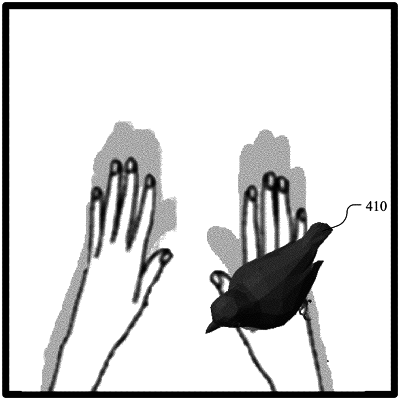| CPC G06T 19/20 (2013.01) [G06T 7/75 (2017.01); G06T 15/04 (2013.01); G06T 15/506 (2013.01); G06T 2200/08 (2013.01); G06T 2207/30196 (2013.01); G06T 2210/12 (2013.01); G06T 2210/62 (2013.01); G06T 2219/2004 (2013.01)] | 14 Claims |

|
1. A method comprising, by a computing system:
receiving an image of a real environment captured using a camera worn by a user, the image comprising a hand of the user;
determining a pose of the hand based on the image and a light direction of a light source;
generating, based on a three-dimensional model of the hand having the determined pose, a first two-dimensional surface representing the hand as viewed from a first viewpoint of the user;
projecting, according to the light direction, the three-dimensional model of the hand having the determined pose onto one or more virtual objects;
generating a second two-dimensional surface representing a shadow of the hand on the one or more virtual objects as viewed from the first viewpoint of the user;
positioning the first two-dimensional surface representing the hand, the second two-dimensional surface representing the shadow of the hand on the one or more virtual objects, and one or more virtual-object representations of the one or more virtual objects in a three-dimensional space;
determining that a first portion of the first two-dimensional surface representing the hand and a second portion of the second two-dimensional surface representing the shadow of the hand are visible from a second viewpoint in the three-dimensional space; and
generating an output image, wherein (1) a first set of image pixels of the output image corresponding to the portion of the first portion of the first two-dimensional surface that is visible is configured to cause a display to turn off a set of corresponding display pixels, and (2) a second set of image pixels of the output image is generated using the second portion of the second two-dimensional surface and one or more associated transparency levels.
|